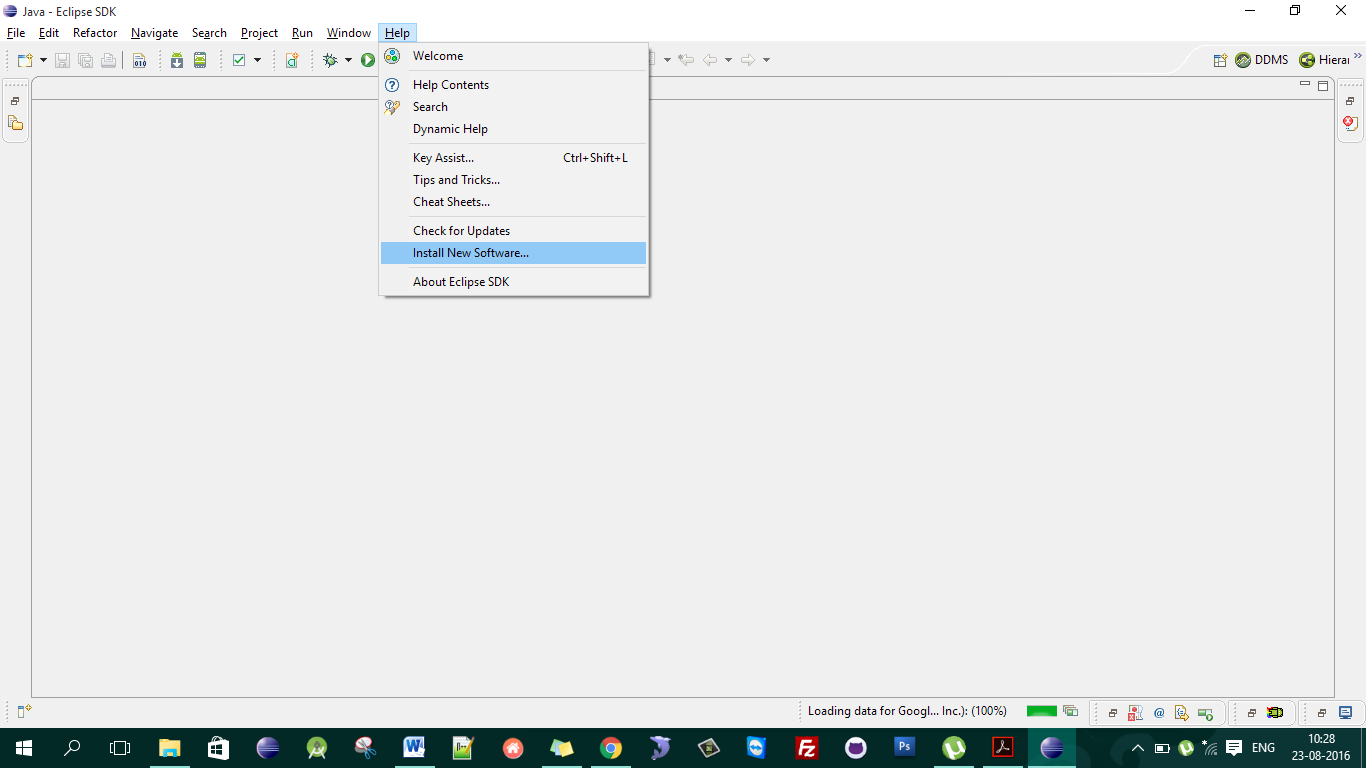
Man is development activation of these devices easy. Unboxed the Nexus One and repeated Step 5. (Palm took all day.) Unfortunately, I suspect this will be countered by the increased difficulty of actually doing the port. This took a few minutes to google the instructions, but the process itself took me about 30 seconds.
Eclipse ide android android#
(The selection of your device doesn’t actually happen until you press Run.)Īnd, we have lift-off! I’ve got my first Android app running on my Droid phone! I must say, activating this device was a delight compared to the Palm experience. (in Eclipse, you can get to this option by clicking the black down arrow next to the big green Run arrow) To select your phone, select the “Run Configurations”, select “Manual” selection and select your device. Please note that the Android version you are developing for must be the installed version on your phone. For details please see Developing on a Device.
Eclipse ide android install#
You also need to install the driver for your mobile phone. Select in the settings Applications > Development, then enable USB debugging. Turn on “USB Debugging” on your device in the settings. Now that I’ve got an app running in the VM, I want to get it running on my Droid and Nexus One.

Eventually your “Hello World” app will start. I found that booting up the Android VM took ages, so be patient.

Step 4 – Completing the “Hello World” tutorial: Then go to Eclipse > Help (?) > Install new software > Select the android source > check developer tools > next > … finish > You do this by first going into Eclipse > Preferences > Install/Update > Available Software Sites > and adding the Android one as specified in Step 1. Install the Android ADT plugin into Eclipse:

Step 3 – Install the Android ADT plugin into Eclipse: From what I can tell it’s what everyone uses for development. I would have opted not to bother downloading Eclipse, but all the tutorials seem to mention it, and I’ve got to start somewhere. I grabbed the Eclipse Classic package since that seemed to be the best guess for doing Java / C / C++ code. Using the package manager, I got all the versions of the SDK that are NDK and OpenGLES compatible. If the port isn’t working in about a week, I’ll be giving up. There’s no promises yet, but we’re going to do what we can here. So I’m going to TRY and port Galcon to the Android.


 0 kommentar(er)
0 kommentar(er)
